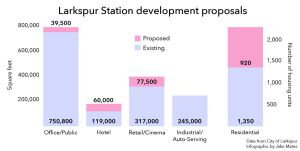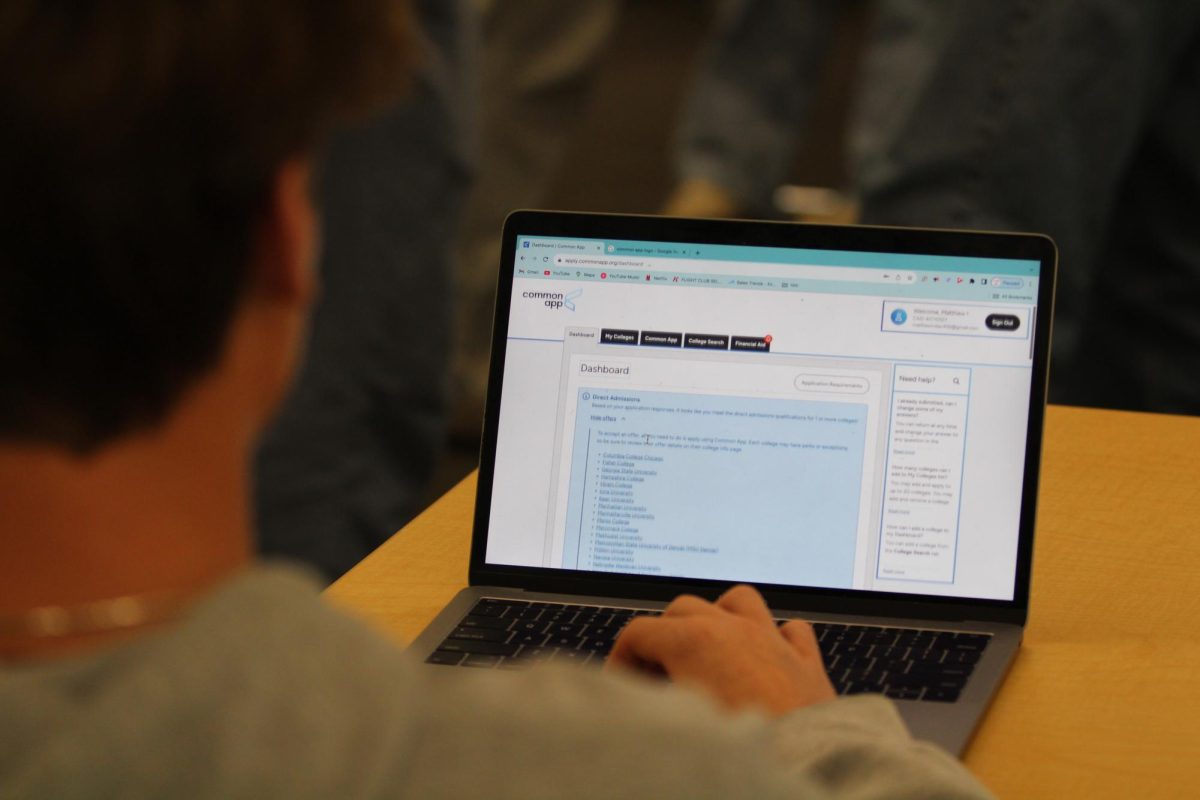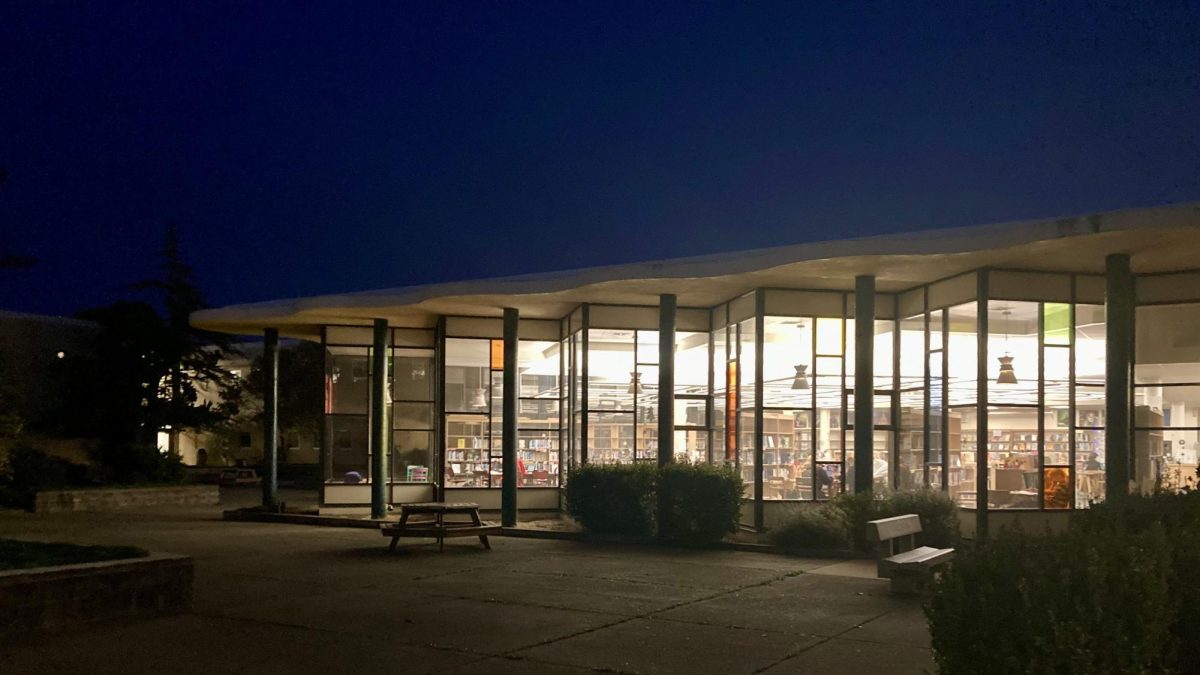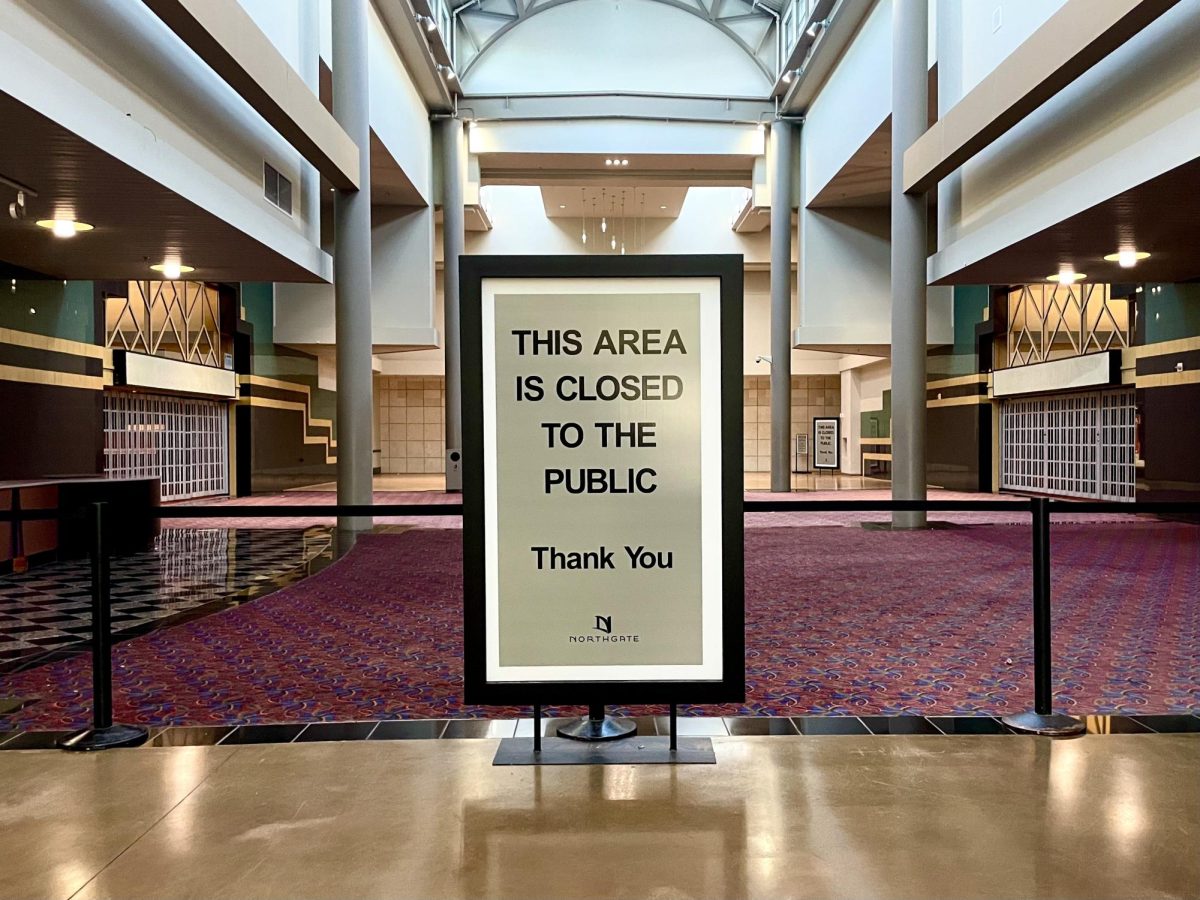A wave of controversy erupted on March 14 when the city of Larkspur publicly released its plans to develop tens of thousands of square feet of high-density housing, office space, retail space, and hotel space around the Larkspur Landing area.
The station plan was proposed because plans have been approved to create train stretching 70 miles along Highway 101 from Cloverdale to Larkspur Landing. The Sonoma-Marin Area Rail Transit train is expected to be operational by 2015 or 2016.

Catherine Way, an elected member on the Larkspur City Council, said that the Station Plan is really a vision-plan for how Larkspur could build around the future SMART train terminal.
“The plan to terminate the SMART train right behind the Marin Airporter building was decided for us,” Way said. “The city of Larkspur said, ‘Well, we’ve got a train coming to town, let’s figure out what we can do to coordinate development in that area around there, if any.’”
The Station Area Plan includes seven opportunity sites for development that incorporate Larkspur Landing and two areas west of Highway 101 along the Corte Madera Creek.
Ann Becker, a Kentfield resident who is upset about the development proposal, said that she believes the sudden construction of the 180-unit apartment complex at the former WinCup site in Corte Madera prompted the community’s opposition to the proposed Larkspur project.
Becker is concerned about aspects of the project such as the capacities of local water and sewage treatment, the future of high-density development in Marin, and how this project would affect traffic and local schools.
“The Bay Area is facing issues having to do with traffic and transit. The experts they called on to help sort through these issues tended to be developers, and it ended up turning into a housing solution to a traffic and transit problem,” Becker said.
The Draft EIR permits the construction of a maximum of 920 additional residential units, 77,500 square feet in additional retail space, 39,500 square feet in office and public space, and 60,000 square feet of hotel space spread out between seven different opportunity sites.
Neal Toft, the SMART Station’s planning and building director, stated that the station plan also contains other aspects that may benefit the community.
“The plan includes a variety of other improvements to enhance circulation throughout the plan area and do improvements on cross walks, intersections, and side walks,” Toft said.
Larkspur Landing lays in an intersection of transit options with the ferry building, the future SMART Train, Highway 580, Sir Francis Drake, and Highway 101 all convening at the same location.
“The growth is intended to be done in a way where it really coordinates with the various transit agencies,” Toft said.
According to Toft, the thinking is that building housing and office space with transit service areas will encourage residents to use these alternative transportation options as opposed to personalized vehicles.
The city of Larkspur opened its 60-day window for public comment on April 1, which locals did not hesitate to utilize.
On March 22, over 300 concerned community members gathered in the Marin Art and Garden Center to listen to a presentation about high-density housing development in Marin by Bob Silvestri, a former low-income housing developer who has since been active in local issues concerning planning and development. Katie Rice, our district’s supervisor, had planned to come and present, but informed the meeting planners three days before that she would be unable to attend.
Silvestri expressed concern about this project and said he is skeptical about the underlying incentives of this developmental project.
“An outside developer comes in, he maximizes his profits, walks away, and the community is left with all the problems that go downstream,” Silvestri said.
Silvestri is also concerned with the long-term future of infrastructure like this, and said he is not aware of any laws in California regulating the maintenance of the type of high-density housing the SMART Station Plan proposes—meaning that the proposed infrastructure has potential to deteriorate due to lack of future maintenance.
“There’s a lot of pressure from state and regional agencies to just build and build and build,” Silvestri said. “I realize that Marin is a beautiful place and everyone wants to live here, but I don’t think ruining Marin is the answer to the problem.”
Way said that the process of discussing and potentially approving a project of this sort may take years, and that it is just in its beginning stages.
“An important thing for people to know is that this is not fast-tracked at all. It’s going to be a very long and well-discussed change, if any change whatsoever,” Way said.
The first public hearing on the Draft Plan and Environmental Impact Report is scheduled for 6:30pm on May 22 at the Hall Middle School Gymnasium.





